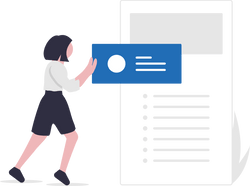Kisan is a large food grain warehouse in central India with a storage capacity of 20,000 metric tonnes. Kisan was looking for a solution to manage the warehouse and granaries to improve operational efficiency, offer better rates and services to farmers and boost profits by leveraging a warehouse management system.
Background
To keep warehouse management activities running optimally, the company had to improve processes across the supply chain. However, there were several challenges as outlined below, which impacted the efficiency of operations:
- Accurately forecasting changes in demand based on economy, season, weather, demographics, and other factors and ensure optimized inventory.
- Managing the crop rates based on the flow of material.
- Regularly communicating with the farmers and maintaining transparency to help them make easy decisions about crop selling.
- Easily access and monitor all the farmer details and their selling patterns and avoid frauds.
- Deciding the best crop rate based on weight measurement and lab results.
- Managing communication between resources within the logistic chain, so productivity can be maximized.
- Having the right procedures in place to fulfill orders and ship them out in time – so, situations such as overstock or out of stock can be eliminated.
- Accurately tracking produce, ensuring correct receipts and purchase orders, and rectifying errors as quickly as possible.
- Accelerating the order picking process to avoid manual, error-prone tasks, and optimizing warehouse management.
Problem Statement
The company was looking for an online warehouse management system that could efficiently control and manage day-to-day operations in their massive warehouse distributed across They wanted the system to be all-encompassing - a system that could optimize an array of warehouse management activities, including inventory management, picking, and shipping of orders, material handling, storage management, and more. The company wanted the system to:
- Be centralized and accessible over the web
- Offer multi-user support to manage a variety of warehouse operations in parallel
- Provide easy-to-understand reports to business owners so they could have insight into warehouse activities at fingertips
- Store information about client servicing and provide timely updates for quick action
- Seamlessly integrate with their existing weighbridge system
Solutions Given
To meet the needs of the company, we assembled a team of highly skilled professionals. We made it a point to choose team members with a farming background, so they could communicate with the client and understand their challenges better.
We chose Joomla as the development framework and divided the system into 6 building blocks: crops and rate manager, billing, client manager, SMS subscription, advances, and reports.
- We finalized the flow of material and built a module that helped the client effectively manage crop rates.
- The SMS module provided farmers with text notifications, so they can make selling decisions based on the daily rate.
- The farmer management module allowed the client to manage farmer details across demographic data: name, address, bank details, and more. This module also helped the client assess farmer selling patterns and send smart farming suggestions to prevent fraud.
- The purchase of grain module helped the client automate the weight measurement process, view lab test details, choose a crop and decide the rate based on crop quality.
- The Advances module enabled the client to receive advance payment against the grain; farmers can return the advance and sell grain when they get a better price.
Benefits - For Farmers
One of the key benefits to farmers is that they receive daily rates via SMS. Using this, they can make a decision to sell the produce without needing to visit the warehouse. This has directly improved the rate at which farmers sell their produce. Digital transformation also helped make crop loans simpler. Tracking of loans and repayment went online, allowing faster loans and tracking of repayment.
Benefits - For the Business
The single most benefit to the business was massive efficiency improvements. This allowed the granary to operate with only a handful of staff. Paperwork was significantly eliminated. This led to the plugging of revenue leakage due to redundant paperwork.
The business had real-time reports of stock, receipts, and loans which allowed them to make decisions faster.
Technologies Used
- PHP (Joomla)
- MySQL
- JavaScript





